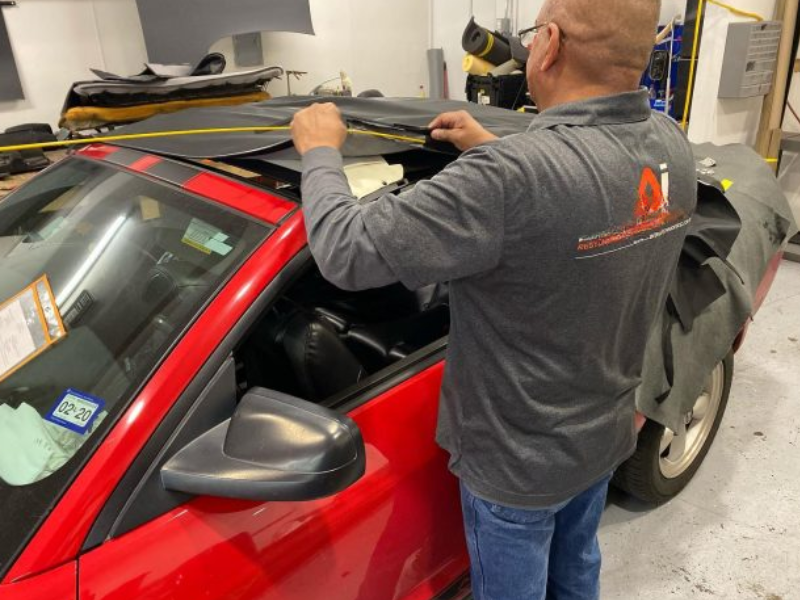Last Updated on October 6, 2023 by Matthew Lloyd
Charcoal canisters are an important part of your car’s emissions system. They filter out harmful pollutants and prevent them from escaping into the air. Over time, however, these canisters become clogged and must be cleaned to maintain optimal performance. Cleaning a charcoal canister is not difficult, but it requires time and effort.
How Does A Charcoal Canister Work?

A charcoal canister is an essential component of a car’s emission control system, which helps reduce the number of pollutants released into the atmosphere. It primarily works by trapping gasoline vapors from the fuel tank and storing them in a charcoal-filled canister until they can be burned off during engine operation. The charcoal inside the canister acts like a sponge that absorbs and holds onto hydrocarbon molecules.
Cleaning A Charcoal Canister: Step-By-Step Instructions
Step1: Unmount The Canister

Unmount a charcoal canister from your vehicle. This is important because the canister needs to be completely detached before you can properly clean it. Typically, the canister is located near the fuel tank, and you should be able to find instructions on removing it in your vehicle’s manual.
Once you have located and removed the canister, inspect it for cracks or other signs of damage. If there are any issues with the canister, it may need to be replaced instead of cleaned.
Step 2: Connect A Vacuum Pressure

Locate the port on your vehicle’s canister where it goes. Once you find it, remove any hose or connector attached to this port. Attach the vacuum cleaner’s nozzle to the port where you removed the hose or connector. Ensure that there are no air leaks between connections; otherwise, your cleaning process might be ineffective.
Step 3: Hold The Upper Pipe

Depending on how tight the clamp or bracket is, you may need pliers or a wrench to hold the upper pipe. Once you have secured the upper pipe, ensure it doesn’t move as you clean out your charcoal canister.
If your charcoal canister has multiple pipes connected, hold all of them securely before proceeding with any cleaning activities.
Step 4: Activate The Vacuum Pump

Turn on the vacuum pump and let it run for about 5-10 minutes while holding the canister tightly. During this process, you’ll hear a suction sound as air passes through the canister. Keep an eye on both pressure gauges throughout this process; one gauge will indicate how much pressure is in your car’s fuel tank, while another will show how much pressure the vacuum pump exerts.
Step 5: Ensure The Air Comes Out
Ensuring all trapped air is released from the charcoal canister will allow maximum absorption of harmful vapors and pollutants from your vehicle’s exhaust system. Failure to properly release trapped air may result in reduced efficiency and increased emissions, leading to potential problems during emission testing.
Step 6: Mount The Canister Back
Locate the mounting bracket for the canister and ensure it is clean and debris-free. Then, line up the bolt holes on the bottom of the canister with those on the mounting bracket. Once aligned, insert bolts into each hole and tighten them securely using a wrench or socket set. Ensure all bolts are tightened evenly to prevent leaks or damage to the canister housing.
Double-check all connections before starting your vehicle. Look for any visible signs of damage or wear on hoses or fittings and replace them as necessary. Start your engine and enjoy better performance from your clean charcoal canister with everything in order!
Symptoms/Signs Of A Bad Charcoal Canister

Signs of a bad charcoal canister include the Check Engine Light turning on, difficulty starting the engine, decreased fuel efficiency, and an unpleasant smell from the vehicle. The Check Engine Light is usually triggered by a malfunctioning sensor that detects issues with emissions, which often point to problems with the charcoal canister. A clogged or damaged canister may also lead to issues starting your car or truck.
How Long Does Charcoal Canister Last?

A charcoal canister typically lasts for about 50,000 miles or five years before it needs to be replaced. However, this lifespan may vary depending on several factors, such as the make and model of your car, driving habits, and maintenance routine.
Can A Bad Charcoal Canister Cause A Misfire?

A bad charcoal canister can cause a misfire. The charcoal canister’s job is to filter out harmful fumes and vapors from the fuel tank and prevent them from entering the engine. When the canister becomes clogged or damaged, it restricts airflow, increasing pressure within the system. This increased pressure can cause a variety of issues, including misfires.
Can I Drive With A Clogged Charcoal Canister?
Driving with a clogged charcoal canister is not recommended, as it may lead to further damage to the vehicle. The best solution is to have the charcoal canister cleaned or replaced immediately.
Conclusion:
Cleaning your charcoal canister is a critical maintenance task that should not be overlooked. Regular cleaning of the canister will ensure it functions optimally and prolong its lifespan. It is recommended to clean the canister at least once every six months or more frequently if you live in a dusty or polluted environment. When cleaning the charcoal canister, always follow the manufacturer’s instructions to avoid damaging it. Use a soft-bristled brush and mild detergent to gently scrub off dirt and debris from the exterior of the canister. Afterward, rinse thoroughly with water and leave it to air dry before reinstalling it into your vehicle.

